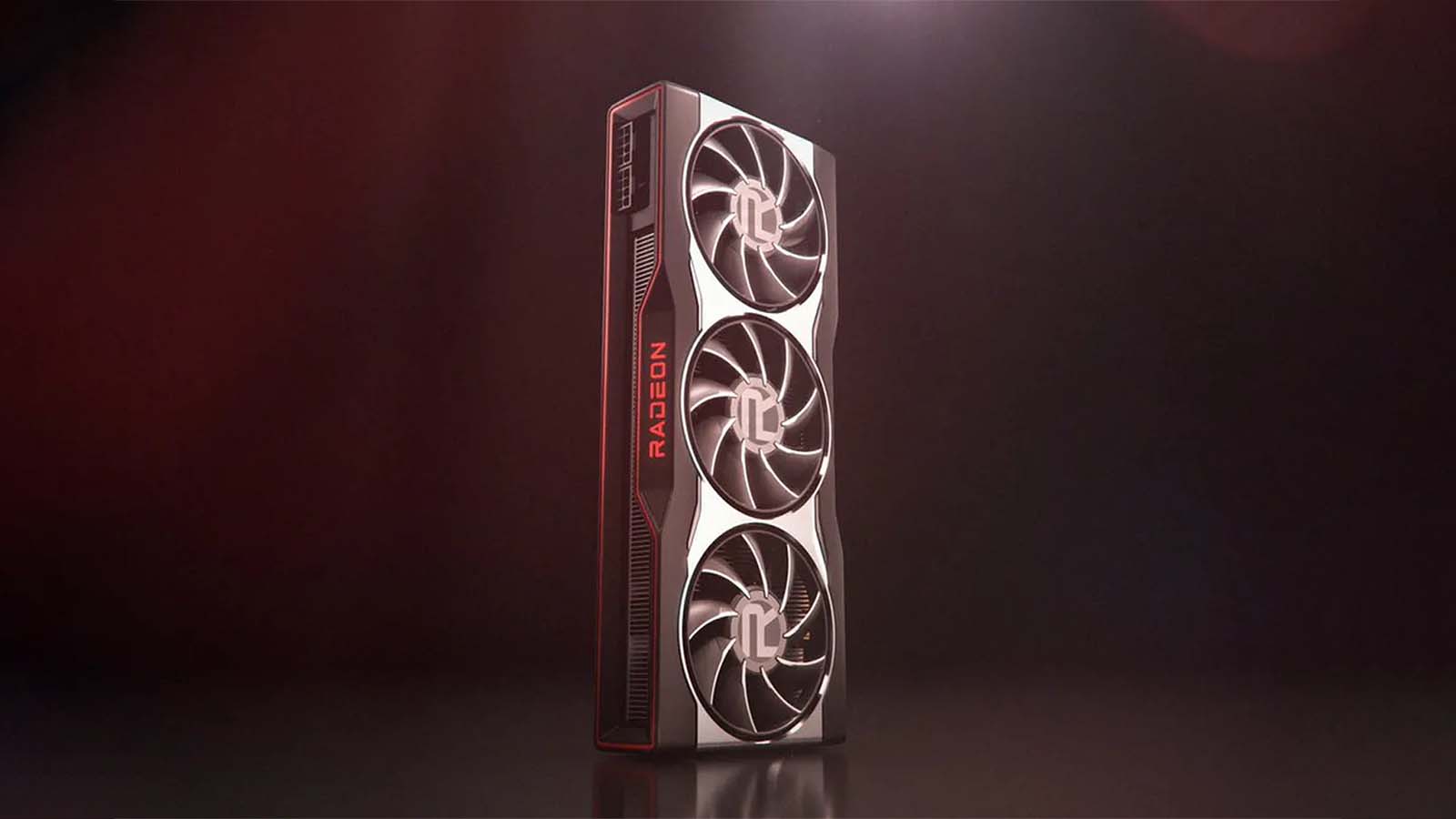AMD’s next-gen RDNA 3 GPUs could be a serious worry for Nvidia
Although Nvidia could have one big advantage in getting to market first

AMD’s next-gen graphics cards could beat Nvidia by a long way when it comes to efficiency, and may also be right up there in performance terms, according to fresh speculation from a well-known hardware leaker on YouTube – but Team Green might beat Team Red to the punch in terms of release date.
The latest video from Moore’s Law is Dead (MLID) covers the upcoming battle of these next-gen GPUs, and emphasizes the purportedly smart design of AMD’s RDNA 3 products, and how they might run rings around Nvidia in terms of power-efficiency.
What will presumably be AMD’s RX 7000 series are predicted to be very frugal and may “blow Lovelace out of the water” when it comes to efficiency, and could match – or maybe even marginally outdo – Nvidia for performance as well, MLID reckons.
That said, the assertions on the performance front certainly sound much more in the realms of speculation, and as ever with these kinds of early rumors, we’ve got to be pretty cautious around everything talked about here.
Where Nvidia has a clear advantage, MLID believes, is in launch timing, as the current educated guesswork from sources indicates that Lovelace (presumably RTX 4000) graphics cards will be out in Q3 2022. That should be a distance ahead of RDNA 3 products which will likely emerge in Q4 (though the leaker reckons that there’s a possibility that mid-range RX 7000 models, namely Navi 33 GPUs, could maybe sneak out before the fourth quarter).
Broadly, though, MLID is looking at Nvidia beating AMD to the punch for launch timeframe.
Analysis: Is this AMD’s big move to grab some serious desktop GPU turf?
RDNA 3 graphics cards running with greater levels of efficiency is hardly a surprise, but the theory that they’ll absolutely leave Nvidia Lovelace GPUs in the dust is not something we’ve heard before. That would be quite a win for Team Red, and admittedly we have witnessed a string of worrying rumors about exactly how power-hungry Nvidia’s next-gen graphics products might be.
Get daily insight, inspiration and deals in your inbox
Sign up for breaking news, reviews, opinion, top tech deals, and more.
This is important particularly at the higher-end, as if Nvidia’s cards really do make some punishing demands on the power front, it could mean gamers are looking at a PSU upgrade – and rather than go that route, if RX 7000 GPUs are indeed way more power-efficient, prospective buyers might change their minds and go Team Red.
It’s also interesting to hear MLID express some cynicism around some of the rumors which have been peddled before about Nvidia Lovelace GPUs promising more than double the performance of current Ampere cards – such as the claim that the RTX 4090 could offer approaching triple the performance of the existing Nvidia flagship.
The leaker puts forward the view that those kinds of estimations are overblown, and that while those other predictions of doubling performance are possible, they’d require Nvidia to push power consumption massively (as is rumored, to be fair, as we already mentioned). MLID certainly believes Lovelace will represent a bigger generational performance increase than Ampere was over Turing, and that it’ll be impressive, but it could be more like a 60% to 80% gain rather than an outright doubling.
This theory that some rumor mongers may have exaggerated Lovelace’s performance increase is partly the reason for MLID’s line of thought that AMD’s RDNA 3 cards will be competitive in terms of raw frame rates (as well as providing much better efficiency).
So, there would appear to reasons for Nvidia to fret about how the next-gen GPU battle is shaping up, and it’s also worth mentioning that RX 7000 graphics cards arriving later may be partially wrapped up in AMD wanting to make sure supply is stronger this time around. The argument is that this might be Team Red’s chance to really get back into the game, and push its desktop GPU market share up from around the 20% mark to something more substantial.
Nvidia being out earlier though, in theory – and with Team Green also upping availability, as broadly speaking, all GPU stock levels are expected to get much better as 2022 rolls onwards – will still be a big advantage, and we shouldn’t get carried away with speculation on how well things might go for AMD.
This is just speculation, after all, and the equation of how the GPU war pans out has another element for consideration, too – namely Intel’s entry into the market with Arc Alchemist cards and how that affects the balance of power. In short, there’s a lot of road to travel yet for 2022, but certainly these latest whispers from the grapevine won’t be comforting for dominant desktop power Nvidia.
- Check out all the best gaming PCs
Darren is a freelancer writing news and features for TechRadar (and occasionally T3) across a broad range of computing topics including CPUs, GPUs, various other hardware, VPNs, antivirus and more. He has written about tech for the best part of three decades, and writes books in his spare time (his debut novel - 'I Know What You Did Last Supper' - was published by Hachette UK in 2013).